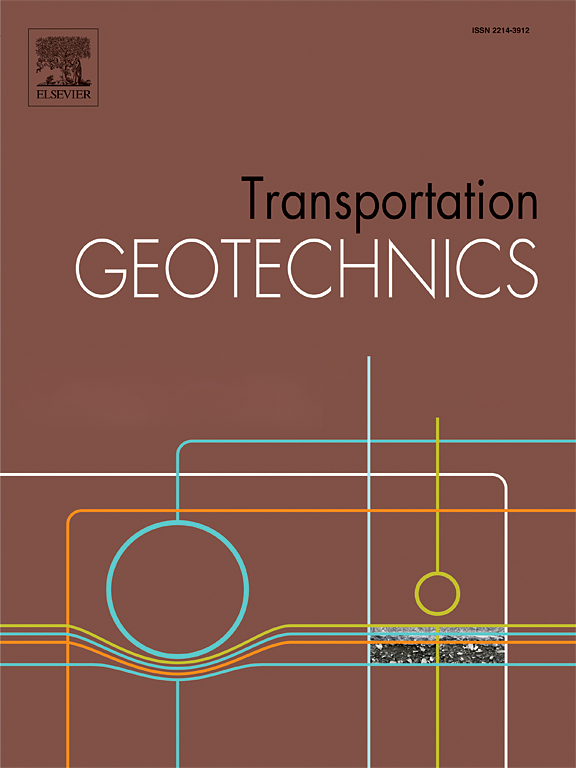Utilizing Dielectric Constant and Electrical Conductivity to Estimate Cement Content in Stabilized Subgrade Soils
IF 4.9
2区 工程技术
Q1 ENGINEERING, CIVIL
引用次数: 0
Abstract
Cement stabilization is a standard method used to strengthen fine-grained soils that are locally available and prepare them for pavement construction. Flexible pavements over cement-stabilized soils commonly experience mild reflective cracking originating from the shrinkage cracks on top of the stabilized layer. The severity of this form of reflective cracking is correlated to inadequate soil–cement construction practices which include thin stabilized layers, low compaction, deviations in cement content from the mix design, and rapid moisture loss. Consequently, these construction issues can significantly reduce the flexible pavement strength and overall life cycle. In this study, a non-destructive quality assurance method using a ground penetrating radar (GPR) and percometer was developed to capture stabilized soil’s inconsistent cement content and hydration rates. A predictive model derived from laboratory testing was created based on the distinct hydration rates, dielectric constants, and electrical conductivities associated with different water and cement contents. Laboratory testing shows that GPR can detect these inconsistencies in cement-stabilized layers within the first seven days after construction through non-destructive testing.
利用介电常数和电导率估算稳定路基土中水泥含量
水泥稳定是一种标准的方法,用于加强当地可获得的细颗粒土壤,并为路面施工做好准备。水泥稳定土上的柔性路面通常经历由稳定层顶部收缩裂缝引起的轻微反射裂缝。这种形式的反射裂缝的严重程度与不充分的水泥土施工实践有关,包括薄的稳定层、低压实、水泥含量与混合设计的偏差以及快速的水分损失。因此,这些施工问题会显著降低柔性路面的强度和整体寿命周期。在本研究中,开发了一种使用探地雷达(GPR)和渗透率计的无损质量保证方法来捕获稳定土中不一致的水泥含量和水化率。根据不同水和水泥含量的水化速率、介电常数和电导率,建立了基于实验室测试的预测模型。实验室测试表明,GPR可以在施工后的前7天内通过无损检测检测到水泥稳定层中的这些不一致性。
本文章由计算机程序翻译,如有差异,请以英文原文为准。
求助全文
约1分钟内获得全文
求助全文
来源期刊

Transportation Geotechnics
Social Sciences-Transportation
CiteScore
8.10
自引率
11.30%
发文量
194
审稿时长
51 days
期刊介绍:
Transportation Geotechnics is a journal dedicated to publishing high-quality, theoretical, and applied papers that cover all facets of geotechnics for transportation infrastructure such as roads, highways, railways, underground railways, airfields, and waterways. The journal places a special emphasis on case studies that present original work relevant to the sustainable construction of transportation infrastructure. The scope of topics it addresses includes the geotechnical properties of geomaterials for sustainable and rational design and construction, the behavior of compacted and stabilized geomaterials, the use of geosynthetics and reinforcement in constructed layers and interlayers, ground improvement and slope stability for transportation infrastructures, compaction technology and management, maintenance technology, the impact of climate, embankments for highways and high-speed trains, transition zones, dredging, underwater geotechnics for infrastructure purposes, and the modeling of multi-layered structures and supporting ground under dynamic and repeated loads.
 求助内容:
求助内容: 应助结果提醒方式:
应助结果提醒方式:


